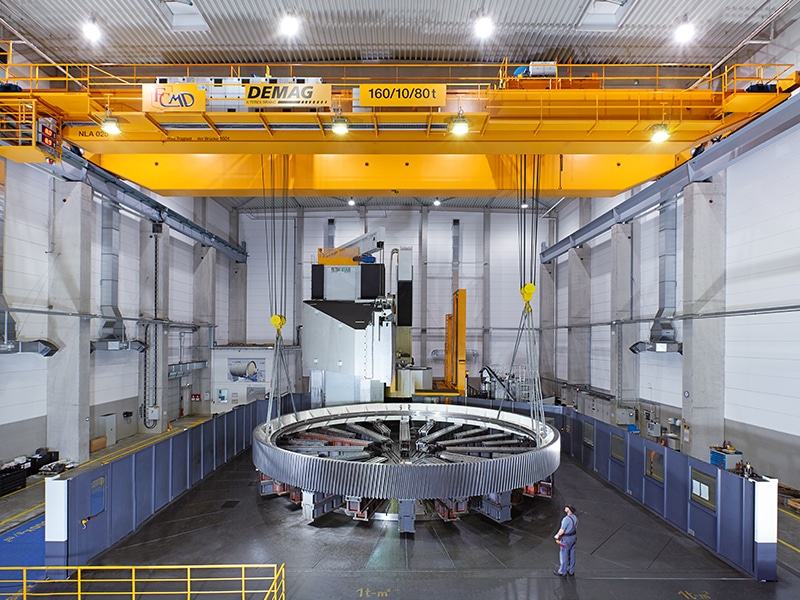Gear wheels and other workpieces measuring up to 6m high and 16m in diameter and weighing up to 160 tons are being lifted, transported and turned by a Demag process crane at a large FCMD machining centre in Hattingen, Germany.
FCMD, a supplier of drive solutions for heavy industry, is equipped with state-of-the-art machining and gear-cutting systems that are used to turn, mill and drill workpieces in a 2,000-square-metre plant.
The company’s Vertical Boring & Cutting Machine 16 (VBCM 16) is one of the largest machining centres in the world, FCMD managing director Dr Matthias Menges says, “but what makes it unique is its combination of size, precision and the variety of machining operations that it can perform in one fixture”.
The requirements to be met by the handling system were correspondingly demanding, Menges says: “For in-house transport applications with our components, the only possible solution was an overhead travelling crane that operates above the machining centre and does not take up any floor space.”
FCMD technical manager Michael Hornecker says the company needed a crane that could pick up and position parts that weigh up to 160 tonnes and measure 16m wide without any vibration and with extreme accuracy.
The specifications defined by FCMD have been met by the 29m-span Demag double-girder overhead travelling crane from Terex Material Handling. Demag MPW multi-purpose open winch units are used to turn the heavy parts safely and precisely by 180 degrees during the production process.
The main lifting motion is rated for a maximum load of 160 tonnes, while the second winch unit has a load capacity of 80 tonnes. In addition, Terex says, a 10-tonne DR hoist unit was installed for use in maintenance and repair work due to its faster lifting speed and reduced hook dimension.
The company’s greatest challenge was to be able to turn the massive components precisely, safely and reliably for further machining.
“This requires complete synchronisation of both hoist drives, with which the hoist units lift and position parts weighing up to 160 tonnes and turn them through 180 degrees,” Terex says. “Also important is the careful control of the crane via the radio control system.
“To achieve this, all crane drives have variable-speed control. In combination with the higher-level PLC as a control system for the entire installation, variable-speed control makes it possible to synchronise the operation of both hoist units.”
Both crane bridges have a reinforced steel superstructure to make sure they only deflect within very tight limits and minimise any natural oscillation.


